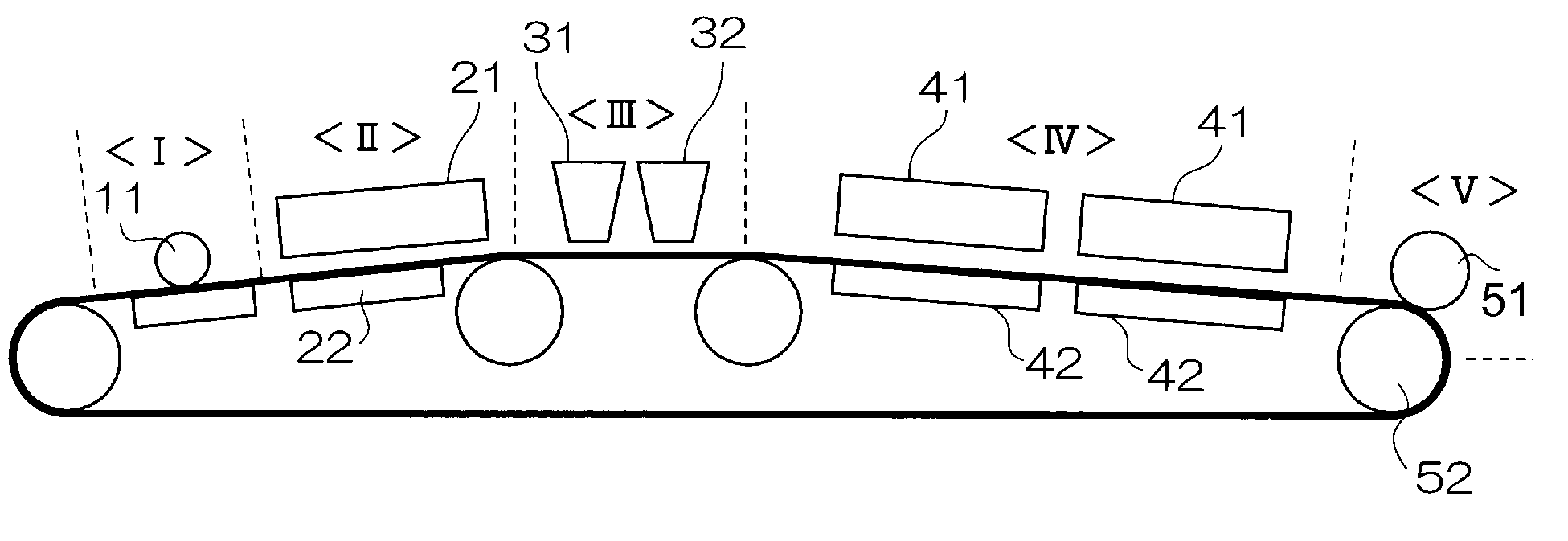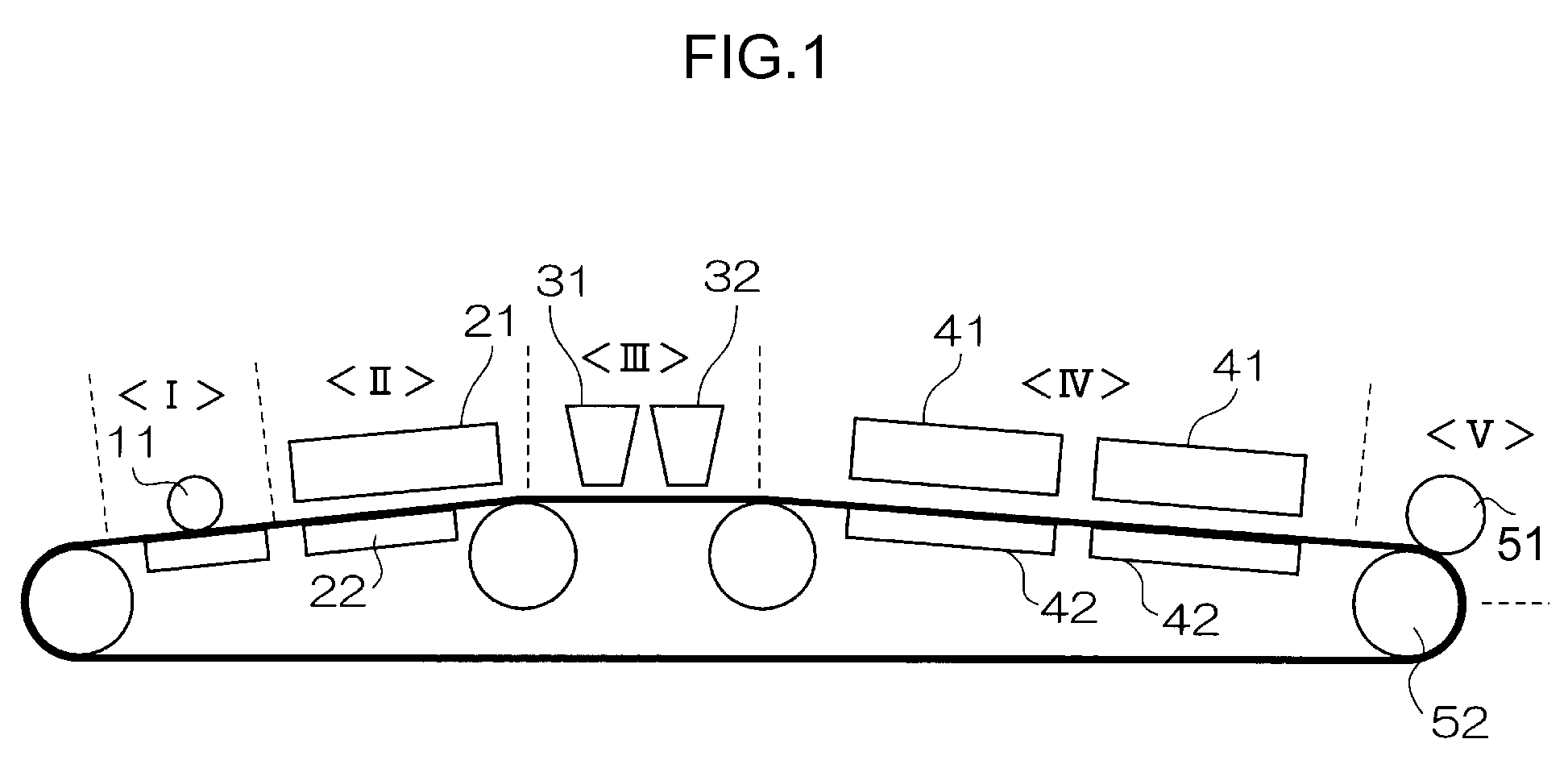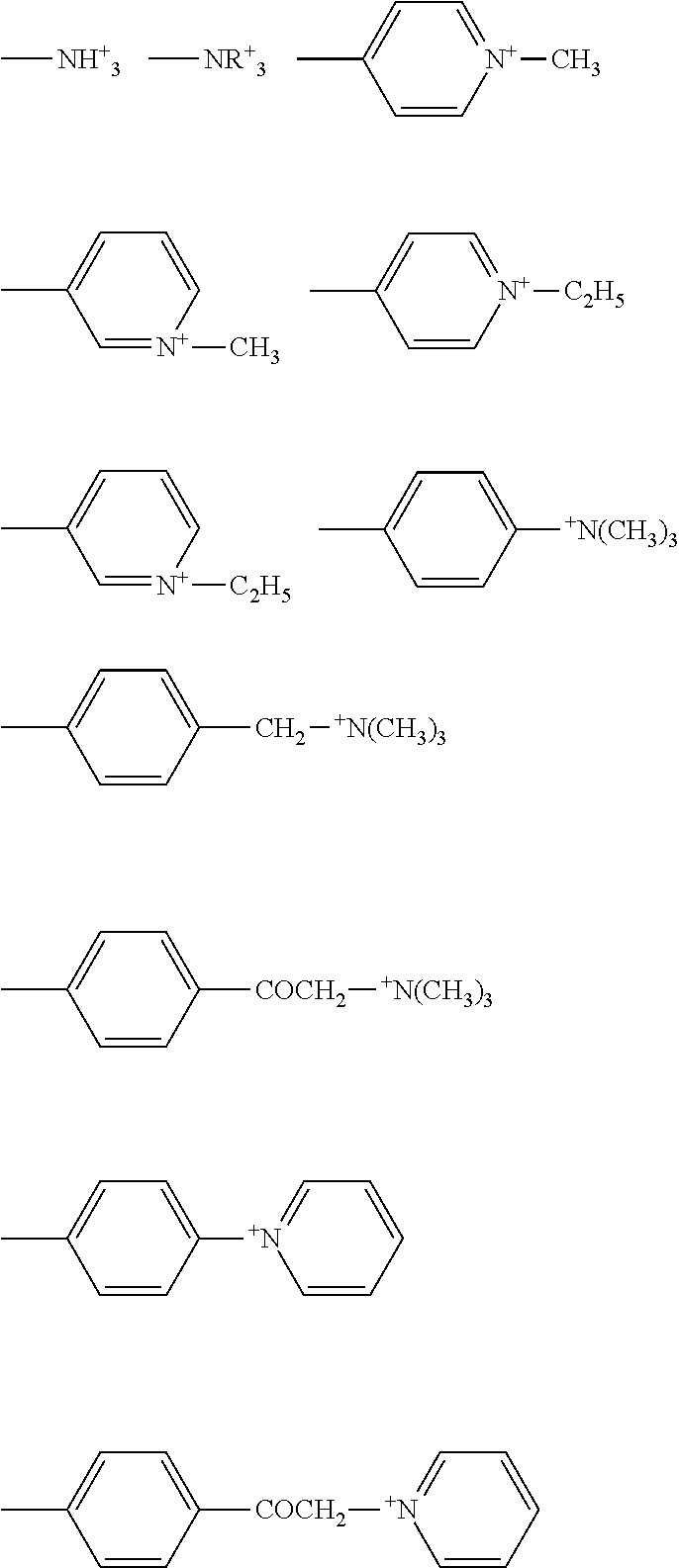Image forming method
a technology of image forming and forming method, which is applied in the direction of duplicating/marking methods, inks, printing, etc., can solve the problems of large bleeding of ink, inconvenient commercial printing in terms of cost, and difficulty in obtaining high-definition images
- Summary
- Abstract
- Description
- Claims
- Application Information
AI Technical Summary
Problems solved by technology
Method used
Image
Examples
production example 1
Preparation of Polymer Solution A
[0329]A 1-L flask equipped with a mechanical stirrer, a thermometer, a nitrogen gas inlet tube, a reflux tube and a dropping funnel was sufficiently purged with nitrogen gas, and then 11.2 g of styrene, 2.8 g of acrylic acid, 12.0 g of lauryl methacrylate, 4.0 g of polyethylene glycol methacrylate, 4.0 g of a styrene macromer (trade name: AS-6, manufactured by Toagosei Co., Ltd.), and 0.4 g of mercaptoethanol were mixed therein. The temperature of the mixture was raised to 65° C.
[0330]Next, a mixed solution of 100.8 g of styrene, 25.2 g of acrylic acid, 108.0 g of lauryl methacrylate, 36.0 g of polyethylene glycol methacrylate, 60.0 g of hydroxylethyl methacrylate, 36.0 g of styrene macromer (trade name: AS-6, manufactured by Toagosei Co., Ltd.), 3.6 g of mercaptoethanol, 2.4 g of azobismethylvaleronitrile, and 18 g of methyl ethyl ketone, was added dropwise into the flask over 2.5 hours. After completion of the dropwise addition, a mixed solution of...
production example 1-1
Preparation of Cyan Pigment Dispersion C-1
[0331]Next, 46 g of the obtained polymer solution A, 33 g of Pigment Blue 15:3 (trade name: PHTHALOCYANINE BLUE A220, manufactured by Dainichiseika Color & Chemicals Mfg. Co., Ltd.), 13.6 g of a 1 mol / L aqueous solution of potassium hydroxide, 20 g of methyl ethyl ketone, and 13.6 g of ion-exchanged water were sufficiently stirred, and then the mixture was kneaded using a roll mill. The obtained paste was introduced into 200 g of purified water, and the mixture was sufficiently stirred. Then, methyl ethyl ketone and water were distilled off using an evaporator, and then glycerin was added thereto. Thus, a cyan pigment dispersion C-1 containing 10.9% by mass of the pigment, 7.5% by mass of the resin (solids content 18.4% by mass), and 9.1% by mass of glycerin, was prepared.
production example 1-2
Preparation of Magenta Pigment Dispersion M-1
[0332]An aqueous dispersion of magenta pigment polymer microparticles was prepared in the same manner as in the Preparation Example 1-1, except that Chromophthal Jet Magenta DMQ (Pigment Red 122; trade name, manufactured by Ciba Specialty Chemicals, Inc.) was used instead of the Pigment Blue 15:3 used in the Preparation Example 1-1. This magenta pigment dispersion M-1 contained 13.6% by mass of the pigment, 4.5% by mass of the resin (solids content 18.1% by mass), and 9.1% by mass of glycerin.
PUM
| Property | Measurement | Unit |
|---|---|---|
| contact time | aaaaa | aaaaa |
| contact time | aaaaa | aaaaa |
| fixing temperature | aaaaa | aaaaa |
Abstract
Description
Claims
Application Information
 Login to View More
Login to View More - R&D
- Intellectual Property
- Life Sciences
- Materials
- Tech Scout
- Unparalleled Data Quality
- Higher Quality Content
- 60% Fewer Hallucinations
Browse by: Latest US Patents, China's latest patents, Technical Efficacy Thesaurus, Application Domain, Technology Topic, Popular Technical Reports.
© 2025 PatSnap. All rights reserved.Legal|Privacy policy|Modern Slavery Act Transparency Statement|Sitemap|About US| Contact US: help@patsnap.com



